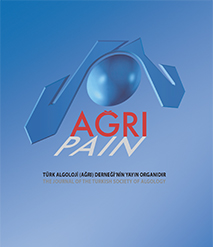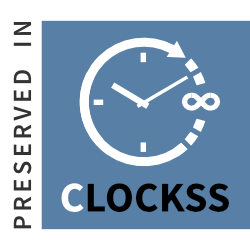Comparison of hemodynamics, recovery profile and postoperative analgesia of unilateral spinal anaesthesia with combined sciatic-femoral nerve block in knee arthroscopy
Muhammed Murat Kurnaz1, Ayşın Ersoy2, Aysel Altan3, Zekeriya Ervatan2, Nurdan Ünlü21Giresun Prof.dr. A.ilhan Özdemir Hospital,department Of Anesthesiology And Intensive Care2Okmeydani Training And Research Hospital,department Of Anesthesiology And Intensive Care
3Kafkas University,department Of Anesthesiology And Intensive Care
Objectives: In this randomized, controlled, blind study, a combined sciatic-femoral nerve block with levobupivacaine was compared with a unilateral spinal anaesthesia with respect to effectiveness, patient and surgeon satisfaction, and the effect on postoperative pain in arthroscopic knee surgery.
Methods: Patients were randomly divided into two groups. Group I (n=20) received a combined sciatic-femoral nerve block with levobupivacaine 0.5% totalling 40 ml. In group II (n=20), a spinal anaesthesia in the lateral decubitus position (ULSA) with 7.5mg levobupivacaine 0.5% was performed, and patients were kept in the same position to achieve an anaesthesia level of T12 (maximum 10 minutes). The development of motor and sensorial block on both sides and onset time to surgical anaesthesia were recorded. The time required for the postoperative recovery score to be ≥12 was recorded. In the postoperative period, postoperative analgesia (VAS), motor block, side effects, and patient and surgeon satisfaction were recorded at the 1st, 3rd, 6th and 12th hours.
Results: Time of readiness for surgery was significantly shorter in Group II (p<0.05). All patients were satisfied with both techniques. There were no differences in judgement between the groups. VAS scores at the 6th hour were significantly lower in group I than in group II (p<0.05).
Conclusion: Combined sciatic-femoral nerve block for outpatient arthroscopic knee surgery offers satisfactory anaesthesia, with a clinical profile similar to that of low-dose spinal anesthesia. Sciatic-femoral nerve blocks are associated with significantly lower pain scores during the first 6 postoperative hours.
Diz artroskopilerinde tek taraflı spinal anestezi ve kombine siyatik-femoral sinir bloğunun hemodinami, ameliyat sonrası analjezi ve derlenme özellikleri açısından karşılaştırılması
Muhammed Murat Kurnaz1, Ayşın Ersoy2, Aysel Altan3, Zekeriya Ervatan2, Nurdan Ünlü21Giresun Prof.dr. A.ilhan Özdemir Devlet Hastanesi, Anesteziyoloji Ve Reanimasyon Kliniği2Okmeydanı Eğitim Ve Araştırma Hastanesi, Anesteziyoloji Ve Reanimasyon Kliniği
3Kafkas Üniversitesi, Anesteziyoloji Ve Reanimasyon Abd
Amaç: Bu randomize, kontrollü, tek kör çalışmada; diz artroskopilerinde levobupivakain ile yapılan kombine siyatik-femoral sinir bloğu; etkinlik, derlenme özellikleri, hasta ve cerrah memnuniyeti ile erken dönem ameliyat sonrası ağrı üzerine etkileri açısından tek taraflı spinal anestezi ile karşılaştırılmıştır.
Gereç ve Yöntem: Çalışmaya alınan olgular iki gruba ayrıldı. Grup I’deki olgulara (n=20)toplam %0.5’lik 40 cc levobupivakain ile kombine siyatik-femoral sinir bloğu uygulandı. Grup II’deki olgulara (n=20) lateral dekübit pozisyonda 7.5 mg levobupivakain ile tek taraflı spinal anestezi (ULSA) uygulandı. Olgular anestezi düzeyi T12 olana kadar (maksimum 10 dk.) bu pozisyonda bekletildi. Cerrahi anestezi düzeyine ulaşmak için geçen zaman, iki taraflı duyusal ve motor blok düzeyleri kaydedildi. Postanestezik derlenme skoru ≥12 olması için geçen süre kaydedildi. Ameliyat sonrası dönemde, ameliyat sonrası analjezi (VAS) değerleri, motor blok seviyeleri, yan etkiler, hastanın ve cerrahın memnuniyeti 1., 3., 6. ve 12. saatlerde kaydedildi.
Bulgular: Cerrahiye hazır olma süresi Grup II’de istatistiksel olarak anlamlı düzeyde kısa bulundu. Hasta ve cerrah memnuniyetleri arasında iki grup arasında istatistiksel açıdan fark bulunamadı: İlk altı saatteki VAS değerleri grup I’de grup II’ye göre belirgin olarak düşüktü (p<0.05).
Sonuç: Kombine siyatik-femoral sinir bloğu, düşük doz uygulanan tek taraflı spinal anesteziyle aynı klinik profille beraber yeterli anestezik etkiyi gösterirken, ameliyat sonrası ilk altı saatlik dönemde VAS değerleri açısından daha başarılı bir analjezi sağlamıştır.
Manuscript Language: Turkish





